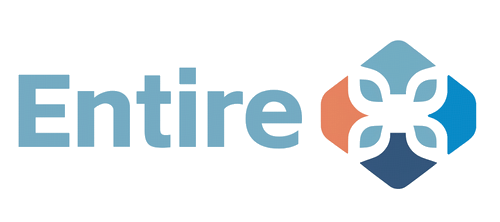The Quantified Cow: How the OBBBA Is Turning the American Dairy into a High-Tech Financial Instrument
By making cost-of-production surveys mandatory for dairy farmers, the new One Big Beautiful Bill Act (OBBBA) is creating a vast, real-time dataset that will transform the industry from a simple commodity business into a sophisticated, data-driven financial market.

A gallon of milk (HS: 0401) begins its journey not in a milking parlor, but on a laptop screen in a Wisconsin farmhouse. A farmer, let’s call her Sarah, is inputting her latest figures for corn silage (part of HS: 2309, animal feed) and soybean meal into her farm management software. This isn't just bookkeeping; it's the first step in a new, data-intensive supply chain forged by the seemingly mundane dairy provisions of the One Big Beautiful Bill Act (OBBBA).
For decades, dairy farming has been a brutal exercise in navigating volatility. The price of milk, set by complex federal orders, could plummet just as the price of feed, swayed by droughts in Brazil or demand from China, would soar. This margin—the gap between the all-milk price and the average feed cost—was a farmer's entire world, and it was often a razor’s edge away from ruin. The Dairy Margin Coverage (DMC) program was created to be a safety net, a government-subsidized insurance policy against these crushing margin collapses.
But the OBBBA doesn't just renew this program; it fundamentally re-engineers its operating system. Tucked away in Section 10313 are several critical upgrades. First, it raises the coverage ceiling for the most affordable insurance tier (Tier I) from 5 million to 6 million pounds of milk annually. This might sound like a minor tweak, but it's a game-changer for the 'middle class' of American dairy—farms of roughly 250 to 300 cows. These operations are the backbone of the industry, too large to be hobby farms but too small to have the sophisticated hedging tools of a multi-thousand-cow mega-dairy. The extra million pounds of subsidized coverage provides them with a level of stability they’ve never had before.
Second, the bill updates how a farm's 'production history' is calculated, allowing them to use their highest output from 2021, 2022, or 2023. This rewards farmers who have invested in efficiency and grown their herds, letting their insurance reflect their current reality, not their past. Finally, by extending the program's life to 2031, the OBBBA injects a crucial, and often absent, ingredient into agriculture: certainty. A farmer can now invest in a new robotic milking system (HS: 8434.10) knowing the fundamental risk-management landscape will be stable for nearly a decade.
These changes alone would be significant. But the true revolution, the detail that transforms this from a simple farm bill into a blueprint for a next-generation industry, is buried in Section 10314. It allocates $50 million for implementation, with a specific, $9 million carve-out for a powerful new mandate: the biennial, mandatory survey of dairy production costs and product yields, collected from every processor in the country.
This is the equivalent of installing a universal API across the entire American dairy industry. Suddenly, what was once a black box of private, closely-guarded information—the true cost of turning a hundredweight of milk into cheddar cheese (HS: 0406.90) in a specific region, or the energy cost of running a milk powder dryer (HS: 8419.39)—will become transparent, standardized, and publicly available data.
The consequences of this data deluge are profound, creating a cascade of innovation up and down the supply chain:
First, for the downstream processors—the Kraft Heinz, Danones, and Chobanis of the world—this is a sourcing revolution. A Chief Procurement Officer at a major yogurt company no longer has to guess at their suppliers' cost structures. They will have access to government-audited, regional cost-of-production data. This transforms contract negotiations from a guessing game into a data-driven exercise in margin analysis. It allows them to build more resilient supply chains by identifying the most efficient production regions and partners.
Second, for the financial markets, this data is rocket fuel. The Chicago Mercantile Exchange (CME) already offers futures and options on milk and cheese. But this new data allows for the creation of far more sophisticated and specific derivative products. Imagine a trader being able to hedge not just the price of cheese, but the 'spread' between the Wisconsin cheddar price and the audited cost of its production. Financial institutions could create new insurance products, or even ETFs, that track the profitability of the dairy sector with unprecedented accuracy. The OBBBA is effectively turning a physical commodity into a transparent, tradable financial instrument.
Third, and perhaps most importantly, it creates a booming market for ag-tech. When a farmer's data is directly tied to federal programs and market prices, the software used to manage that data becomes mission-critical. Companies providing farm management information systems (FMIS), sensor technology to track individual cow health and milk output, and software to optimize feed rations will see their value proposition skyrocket. Sarah, our Wisconsin farmer, isn't just buying software to help her farm; she's buying a terminal to interface with the new financial and regulatory reality of her industry.
The journey of that gallon of milk is now twofold. It has a physical path—from the cow, to the bulk tank, to the tanker truck, to the processing plant. But it now has a parallel, digital path—from a sensor on the cow's collar, to Sarah's laptop, to a government database in Washington D.C., to a trader's algorithm in Chicago. The OBBBA's greatest legacy won't be the checks it writes to farmers, but the data infrastructure it builds. It is methodically turning the humble American dairy farm into one of the most quantified and technologically integrated sectors of the global economy.




